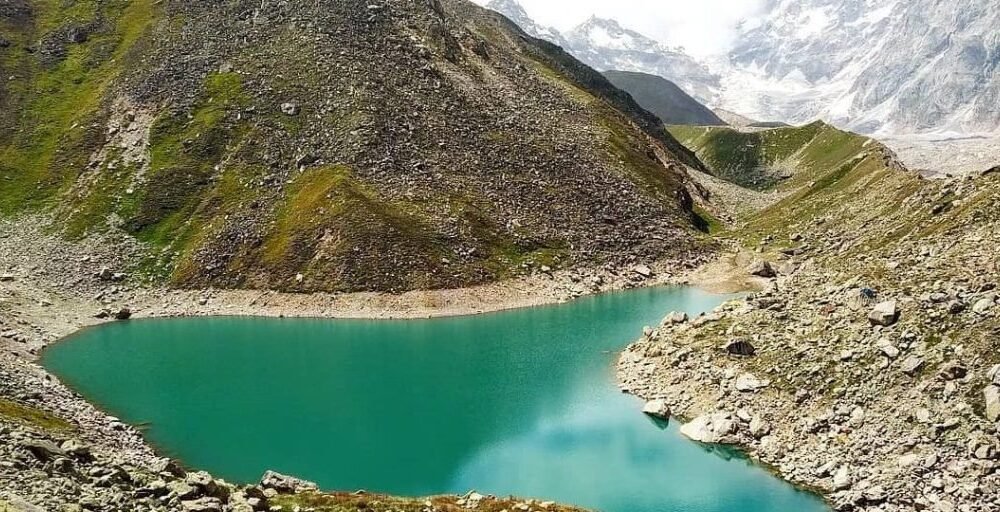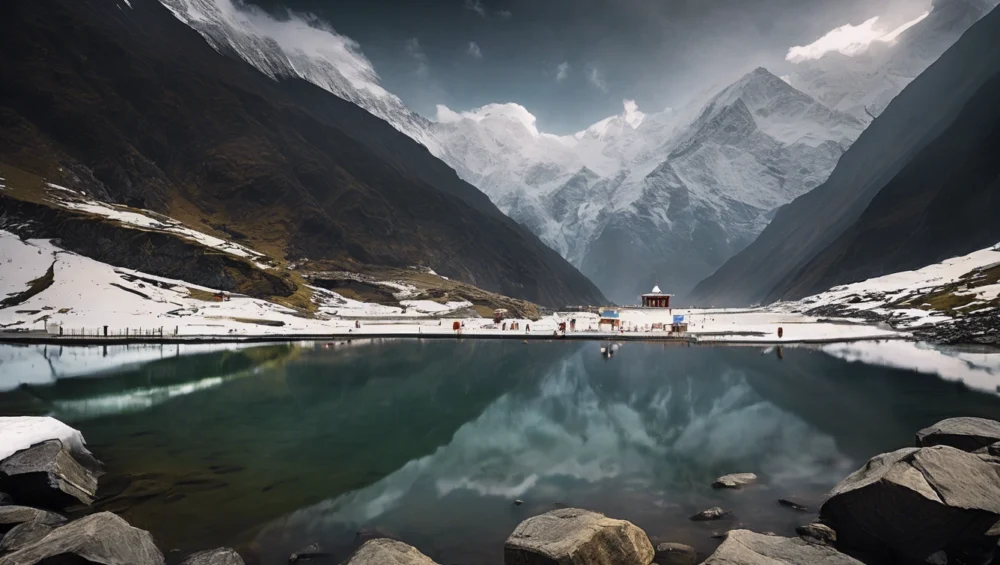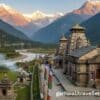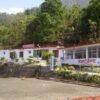Rivers of Uttarakhand
“Uttarakhand” is a state which is known for its hundreds and thousands of small and big rivers, sacred temples, and holy places, situated on the banks of the holy rivers. Some rivers have relevance in Hindu mythology and these rivers have religious significance in India. The Source of these rivers is the glaciers of the Himalayas (western Himalayas) situated within India, Nepal, and Tibet borders. These rivers play a very important role in economic, social, cultural, and environmental issues in India.
The important dams in Uttarakhand on these rivers are providing electricity to thousands of homes in India. These rivers are the backbone of the Indian economy because of their huge usage in farming, drinking water, fishing, trading, electricity, etc. In some parts of Uttarakhand rivers like Tons, Ganga (rafting in Rishikesh), Yamuna and Kali are very famous for a wide variety of water sports. These rivers are clean and less polluted till they enter the plains (Tarai region).
Some Major Rivers of Uttarakhand
Alaknanda River
The Alaknanda River is a major headstream of the Ganges River in the Indian state of Uttarakhand. It originates from the confluence of the Satopanth and Bhagirath Kharak glaciers and flows through the Garhwal Himalayas. The Alaknanda is a sacred river in Hinduism, and is known for its scenic beauty and whitewater rafting opportunities.
Origin and Course:
- It originates from the confluence and foot of the Satopanth and Bhagirath Kharak glaciers.
- It flows through the Garhwal Himalayas, traversing scenic landscapes.
- It merges with the Bhagirathi River at Devprayag, and from that confluence, the river is known as the Ganges (Ganga).
Significance:
- It’s one of the two major headstreams of the Ganges.
- It holds immense religious importance in Hinduism, with numerous pilgrimage sites along its banks, including Badrinath.
- The confluence of the Alaknanda with its tributaries, known as the “Panch Prayag” (five confluences), is considered sacred.
- Those confluences are; Vishnuprayag, Nandprayag, Karnaprayag, Rudraprayag, and Devprayag.
- It is also used for hydroelectric power generation.
Key Features:
- The Alaknanda contributes a larger volume of water to the Ganges than the Bhagirathi.
- The river is also known for its white-water rafting opportunities.
In essence, the Alaknanda River is a vital waterway in Uttarakhand, characterized by its spiritual significance, scenic beauty, and hydrological importance.
Ganga River
The Ganga River’s presence in Uttarakhand is profoundly significant, marking the river’s initial descent from the Himalayas. It originates at Devprayag, where the Alaknanda and Bhagirathi rivers converge. The Bhagirathi’s source lies at Gaumukh, the foot of the Gangotri Glacier.
Flowing through the sacred landscapes of Uttarakhand, Ganga’s course is punctuated by key pilgrimage sites like Haridwar and Rishikesh. This region holds immense spiritual importance in Hinduism, with the river considered a divine entity. The pristine waters of the Ganga in Uttarakhand are vital to both the ecological balance and the cultural heritage of the area.
Origin and Course:
- It originates at Devprayag, the confluence of the Alaknanda and Bhagirathi rivers.
- It flows down from the Himalayan mountains, through the valleys of Uttarakhand.
- It then flows out of the mountains at Rishikesh, and onto the plains at Haridwar.
Significance:
- It is the most sacred river in Hinduism, with immense religious importance.
- Haridwar is a major pilgrimage site where millions of devotees gather for religious ceremonies.
- The Ganga is believed to purify the soul and liberate from the cycle of rebirth.
- It is the main river that is used for the last rites of Hindus.
- It is vital for the irrigation of agricultural land in the plains below.
Key Features:
- The Ganga’s course in Uttarakhand is characterized by its clear, pristine waters.
- The river supports a rich biodiversity and is essential for the region’s ecology.
- The river is used for rafting in the area around Rishikesh.
- The river is also used for hydroelectric power generation.
- The river’s health is a major concern due to pollution from urban and industrial waste.
In essence, the Ganga River in Uttarakhand is a river of profound spiritual significance and environmental importance, serving as a lifeline for both the region’s people and its ecosystem.
Gaula River
Gaula River originates in the lesser Himalayas of the Nainital district in Uttarakhand. It flows through several important towns and eventually joins the Ramganga River. The river is significant for irrigation and drinking water supply in the region. While researching, I also found mentions of a dam built on the river, which is an important feature.
Key Highlights:
✅ Origin: High-altitude glaciers near the Indo-Tibet border, Pithoragarh district
✅ Confluence: Joins the Kali River at Tawaghat
✅ Significance: Crucial for hydroelectric projects, irrigation, and local biodiversity
✅ Scenic Attractions: Tawaghat, Dharchula, and the rugged landscapes of the Darma Valley This glacial-fed river is important for irrigation, freshwater supply, and hydropower generation, particularly the Dhauliganga Hydroelectric Project. Flowing through remote valleys and breathtaking Himalayan terrain, it remains a hidden gem of Uttarakhand’s river network.”
Dhauliganga River (Kumaon) – A Tributary of the Kali River
The Dhauliganga River in Kumaon is a tributary of the Kali River, flowing through the Pithoragarh district of Uttarakhand. It originates from the snow-clad peaks near the Indo-Tibet border and merges with the Kali River at Tawaghat.
Key Highlights:
✅ Origin: High-altitude glaciers near the Indo-Tibet border, Pithoragarh district
✅ Confluence: Joins the Kali River at Tawaghat
✅ Significance: Crucial for hydroelectric projects, irrigation, and local biodiversity
✅ Scenic Attractions: Tawaghat, Dharchula, and the rugged landscapes of the Darma Valley
This glacial-fed river is important for irrigation, freshwater supply, and hydropower generation, particularly the Dhauliganga Hydroelectric Project. Flowing through remote valleys and breathtaking Himalayan terrain, it remains a hidden gem of Uttarakhand’s river network.
Dhauliganga River – A Mighty Tributary of the Alaknanda
The Dhauliganga River is a glacial-fed tributary of the Alaknanda River, flowing through the Garhwal region of Uttarakhand. It originates from the Niti Pass near the Indo-Tibet border and merges with the Alaknanda River at Vishnuprayag, one of the Panch Prayags (five confluences) of the Ganga.
Key Highlights:
✅ Origin: Niti Pass, Chamoli district
✅ Confluence: Joins the Alaknanda River at Vishnuprayag
✅ Significance: Supports hydroelectric power projects and is crucial for the river system
✅ Scenic Attractions: Vishnuprayag, Joshimath, Niti Valley, and the surrounding Himalayan landscapes
The Dhauliganga River is essential for hydroelectric projects, including the Tapovan Vishnugad Hydropower Plant. Its pristine waters, rugged terrain, and spiritual significance make it an important river in Uttarakhand.
Bhagirathi River – The Sacred Source of the Ganga
The Bhagirathi River is one of the two main headstreams of the Ganga River, originating from the Gaumukh Glacier near Gangotri in Uttarakhand. It flows through the Garhwal Himalayas, passing Gangotri, Uttarkashi, and Tehri, before merging with the Alaknanda River at Devprayag, where it officially becomes the Ganga River.
Key Highlights:
✅ Origin: Gaumukh Glacier, Uttarkashi district
✅ Confluence: Merges with the Alaknanda River at Devprayag to form the Ganga
✅ Significance: Holy river in Hinduism, associated with the legend of King Bhagirath bringing the Ganga to Earth
✅ Scenic Attractions: Gangotri Temple, Gaumukh Glacier, Tehri Dam, and Devprayag
The Bhagirathi River is spiritually, ecologically, and hydrologically important. It supports irrigation, hydroelectric projects, and religious tourism, making it one of the most revered rivers in Uttarakhand and India.
Bhilangana River – A Pristine Tributary of the Bhagirathi
The Bhilangana River is a scenic tributary of the Bhagirathi River, flowing through the Tehri district of Uttarakhand, India. Originating from the Khatling Glacier at an altitude of around 3,717 meters, it is known for its crystal-clear waters, rugged landscapes, and spiritual significance.
Key Highlights:
✅ Origin: Khatling Glacier, Garhwal Himalayas
✅ Confluence: Joins Bhagirathi River near Old Tehri
✅ Significance: Vital for irrigation, local biodiversity, and tourism
✅ Scenic Attractions: Khatling Glacier, lush valleys, and trekking routes
The Bhilangana Valley offers breathtaking views, adventure opportunities, and a peaceful escape for nature lovers and trekkers. Its pristine beauty and cultural importance make it a hidden gem of Uttarakhand.
Gori Ganga River – The Lifeline of Munsiyari
The Gori Ganga River is a glacial-fed river flowing through the Pithoragarh district of Uttarakhand, India. It originates from the Milam Glacier, near the India-Nepal-Tibet border, and merges with the Kali River at Jauljibi.
Key Highlights:
✅ Origin: Milam Glacier, Kumaon Himalayas
✅ Confluence: Merges with Kali River at Jauljibi
✅ Significance: Essential for local irrigation, hydroelectric projects, and biodiversity
✅ Scenic Attractions: Munsiyari, Milam Glacier, and Nanda Devi Biosphere Reserve
The Gori Ganga Valley is a paradise for trekkers, adventure seekers, and nature lovers, offering stunning landscapes, remote villages, and rich flora & fauna. It plays a crucial role in the ecology and economy of the region.
Kali River – The Mighty Border River of Uttarakhand
The Kali River, also known as the Sharda River, is a major Himalayan river that flows through the Kumaon region of Uttarakhand. It originates from the Kalapani Glacier in the Pithoragarh district and forms the natural boundary between India and Nepal before merging with the Ghaghara River in Uttar Pradesh.
Key Highlights:
✅ Origin: Kalapani Glacier, Uttarakhand
✅ Confluence: Merges with Ghaghara River in Uttar Pradesh
✅ Significance: Forms the Indo-Nepal border, vital for irrigation, hydroelectric projects, and local culture
✅ Scenic Attractions: Jauljibi, Dharchula, Pithoragarh, and Kali River rafting adventures
The Kali River is known for its cultural, economic, and geopolitical importance. It also offers adventure sports like white-water rafting and supports rich biodiversity along its course.
Kosi River – The Lifeline of Uttarakhand’s Wildlife & Agriculture
The Kosi River is an important Himalayan river that flows through Uttarakhand, primarily in the Kumaon region. It originates from the Dudhahatoli ranges near Kausani and flows through Almora, Nainital, and Ramnagar, before joining the Ramganga River.
Key Highlights:
✅ Origin: Dudhahatoli Ranges, near Kausani
✅ Confluence: Joins the Ramganga River in Uttar Pradesh
✅ Significance: Provides water for irrigation, supports local ecosystems, and is crucial for Corbett National Park
✅ Scenic Attractions: Jim Corbett National Park, Almora, Kausani, Ramnagar
The Kosi River is vital for agriculture, tourism, and wildlife conservation in Uttarakhand. It is especially significant as a lifeline for Jim Corbett National Park, supplying water to the diverse flora and fauna of the region.
Mandakini River – The Sacred River of Kedarnath
The Mandakini River is holy in Uttarakhand, flowing through the Garhwal Himalayas. It originates from the Chorabari Glacier, near Kedarnath, and merges with the Alaknanda River at Rudraprayag. This river holds immense religious significance as it flows near the Kedarnath Temple, one of the holiest Hindu pilgrimage sites.
Key Highlights:
✅ Origin: Chorabari Glacier, near Kedarnath
✅ Confluence: Merges with Alaknanda River at Rudraprayag
✅ Significance: Sacred river in Hinduism, vital for pilgrims and local communities
✅ Scenic Attractions: Kedarnath, Sonprayag, Rudraprayag, and Mandakini Valley
The Mandakini River is not only a spiritual lifeline but also essential for irrigation, hydroelectric power, and biodiversity in the region. Its serene beauty and sacred aura make it one of Uttarakhand’s most revered rivers.
Nandakini River – A Serene Tributary of the Alaknanda
The Nandakini River is one of the five major tributaries of the Alaknanda River, flowing through the Chamoli district of Uttarakhand. It originates from the Nanda Ghunti Glacier, near the Nanda Devi massif, and merges with the Alaknanda at Nandprayag, one of the sacred Panch Prayags (five confluences).
Key Highlights:
✅ Origin: Nanda Ghunti Glacier, Garhwal Himalayas
✅ Confluence: Joins the Alaknanda River at Nandprayag
✅ Significance: Vital for local agriculture, ecology, and religious importance
✅ Scenic Attractions: Nandprayag, Nanda Devi Biosphere Reserve, and trekking routes
The Nandakini River flows through pristine valleys, dense forests, and remote villages, offering stunning landscapes and spiritual significance. It plays a crucial role in the hydrology and biodiversity of Uttarakhand.
Eastern Nayar River – A Vital Tributary of the Ganga
The Eastern Nayar River is one of the two main branches of the Nayar River, flowing through the Pauri Garhwal district of Uttarakhand. It originates from the Doodhatoli ranges and is an important tributary of the Ganga River.
Key Highlights:
✅ Origin: Doodhatoli Ranges, Garhwal Himalayas
✅ Confluence: Joins the Ganga River near Satpuli
✅ Significance: Essential for irrigation, local biodiversity, and religious importance
✅ Scenic Attractions: Pauri, Satpuli, and Nayar Valley
The Eastern Nayar River is a lifeline for villages in the region, supporting agriculture and freshwater ecosystems. It also offers picturesque landscapes and opportunities for eco-tourism and adventure activities.
Western Nayar River – A Serene Tributary of the Ganga
The Western Nayar River is one of the two main branches of the Nayar River, flowing through the Pauri Garhwal district of Uttarakhand. It originates from the Gairsain region and merges with the Eastern Nayar River before joining the Ganga River near Satpuli.
Key Highlights:
✅ Origin: Gairsain region, Garhwal Himalayas
✅ Confluence: Merges with the Eastern Nayar and then joins the Ganga near Satpuli
✅ Significance: Supports local agriculture, and biodiversity, and provides water for nearby villages
✅ Scenic Attractions: Pauri, Thalisain, Satpuli, and Nayar Valley
The Western Nayar River is crucial for irrigation, freshwater supply, and ecological balance in the region. Its pristine beauty makes it a hidden gem for nature lovers and adventure seekers.
Pindar River – The Glacial Beauty of Chamoli
The Pindar River, also known as the Pindar Ganga, is a glacial-fed tributary of the Alaknanda River, flowing through the Chamoli district of Uttarakhand. It originates from the Pindari Glacier in the Kumaon Himalayas and merges with the Alaknanda River at Karnaprayag, one of the Panch Prayags (five confluences).
Key Highlights:
✅ Origin: Pindari Glacier, Kumaon Himalayas
✅ Confluence: Joins the Alaknanda River at Karnaprayag
✅ Significance: Vital for irrigation, hydroelectric projects, and religious importance
✅ Scenic Attractions: Pindari Glacier Trek, Bageshwar, Karnaprayag, and lush river valleys
The Pindar River is not only crucial for local agriculture and biodiversity but also a popular trekking destination, attracting adventurers to the Pindari Glacier Trek. Its crystal-clear waters and breathtaking landscapes make it one of Uttarakhand’s most picturesque rivers.
Eastern Ramganga River – A Vital River of Kumaon
The Eastern Ramganga River is a major Himalayan river flowing through the Kumaon region of Uttarakhand. It originates from the Doodhatoli Hills in Chamoli district and passes through Almora, Pithoragarh, and Nainital districts before merging with the Ganga River in Uttar Pradesh.
Key Highlights:
✅ Origin: Doodhatoli Hills, Chamoli district
✅ Confluence: Joins the Ganga River in Uttar Pradesh
✅ Significance: Supports agriculture, hydroelectric power, and biodiversity
✅ Scenic Attractions: Jim Corbett National Park, Ranikhet, Bageshwar, and Almora
The Eastern Ramganga River is crucial for wildlife conservation, especially as a lifeline for Jim Corbett National Park. It is also essential for irrigation, fishing, and eco-tourism, making it an important river in Uttarakhand.
Eastern Ramganga River – A Lifeline of Kumaon
The Eastern Ramganga River is a major Himalayan river that flows through the Kumaon region of Uttarakhand. It originates from the Doodhatoli Hills in the Chamoli district and travels through Almora, Pithoragarh, and Nainital districts before entering Uttar Pradesh, where it joins the Ganga River.
Key Highlights:
✅ Origin: Doodhatoli Hills, Chamoli district
✅ Confluence: Joins the Ganga River in Uttar Pradesh
✅ Significance: Supports irrigation, hydroelectric projects, and biodiversity
✅ Scenic Attractions: Jim Corbett National Park, Ranikhet, Bageshwar, and Almora
The Eastern Ramganga River is crucial for agriculture, wildlife conservation, and tourism. It serves as a lifeline for Jim Corbett National Park, providing water for diverse flora and fauna. Its pristine beauty and ecological importance make it one of Uttarakhand’s most significant rivers.
Saryu River – The Lifeline of Kumaon
The Saryu River is an important Himalayan river flowing through the Kumaon region of Uttarakhand. It originates from the Sarmul region in Bageshwar district and merges with the Kali River at Pancheshwar, near the India-Nepal border.
Key Highlights:
✅ Origin: Sarmul, Bageshwar district
✅ Confluence: Joins the Kali River at Pancheshwar
✅ Significance: Supports irrigation, hydroelectric projects, and is culturally significant
✅ Scenic Attractions: Bageshwar, Pancheshwar, and the surrounding valleys
The Saryu River plays a vital role in agriculture and local livelihoods, and it is also known for angling and river-based adventure activities. Flowing through scenic valleys and ancient temples, it holds great spiritual and ecological importance in Uttarakhand.
Tons River – The Largest Tributary of the Yamuna
The Tons River is the largest tributary of the Yamuna River, flowing through the Garhwal region of Uttarakhand. It originates from the Bandarpunch Glacier in the Western Himalayas and merges with the Yamuna River near Kalsi in the Dehradun district.
Key Highlights:
✅ Origin: Bandarpunch Glacier, Uttarkashi district
✅ Confluence: Joins the Yamuna River at Kalsi, Dehradun
✅ Significance: Major source of water for the Yamuna, known for rafting and adventure sports
✅ Scenic Attractions: Mori Valley, Chakrata, Tons Valley, and Govind Wildlife Sanctuary
The Tons River is famous for its fast-flowing waters, making it a hotspot for white-water rafting and adventure tourism. It also plays a crucial role in ecology, agriculture, and hydroelectric projects in Uttarakhand.
Yamuna River – A Sacred Lifeline of Uttarakhand
The Yamuna River is one of the holiest and longest rivers in India, originating from the Yamunotri Glacier in the Garhwal Himalayas of Uttarakhand. It flows through Uttarkashi, Dehradun, and the Doon Valley, before entering the plains of North India.
Key Highlights:
✅ Origin: Yamunotri Glacier, Uttarkashi district
✅ Confluence: Joins the Ganga River at Triveni Sangam, Prayagraj (Uttar Pradesh)
✅ Significance: One of India’s most sacred rivers, linked to Hindu mythology and pilgrimage
✅ Scenic Attractions: Yamunotri Temple, Barkot, Kalsi, and Chakrata
The Yamuna River is spiritually significant, with Yamunotri Temple being one of the Char Dham pilgrimage sites. It also plays a vital role in agriculture, hydroelectric projects, and local biodiversity in Uttarakhand.
Frequently Asked Questions About Rivers In Uttarakhand
Which is the longest river in Uttarakhand?
The Alaknanda River is the longest in Uttarakhand, which is also the major source of river Ganges.
Which dams are situated in Uttarakhand?
The Haripura Dam, Srinagar Hydroelectric Project, and Tehri Dam are situated in Uttarakhand. The Haripura Dam is an earthen embankment built on the Bhakra River in Udham Singh Nagar, the Alaknanda River, and the Bhagirathi River.
In which state Ramganga River is situated?
The Ramganga is situated in Uttarakhand and originates from the Doodhatoli ranges in the district of Pauri Garhwal.









